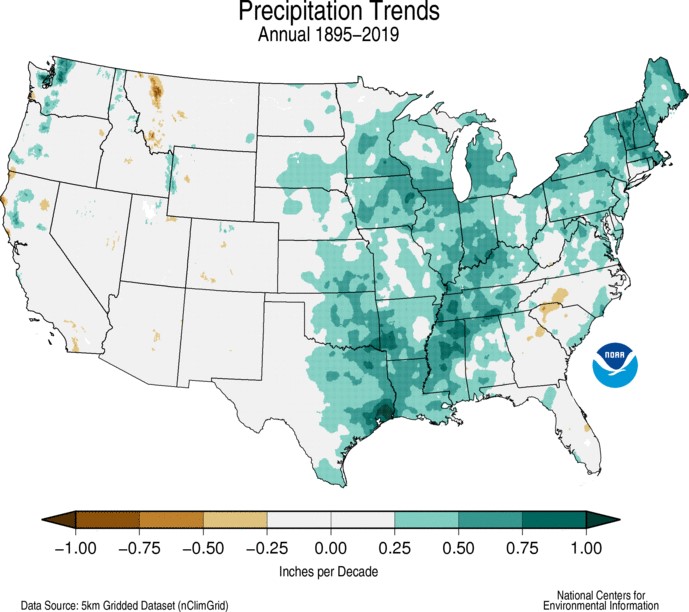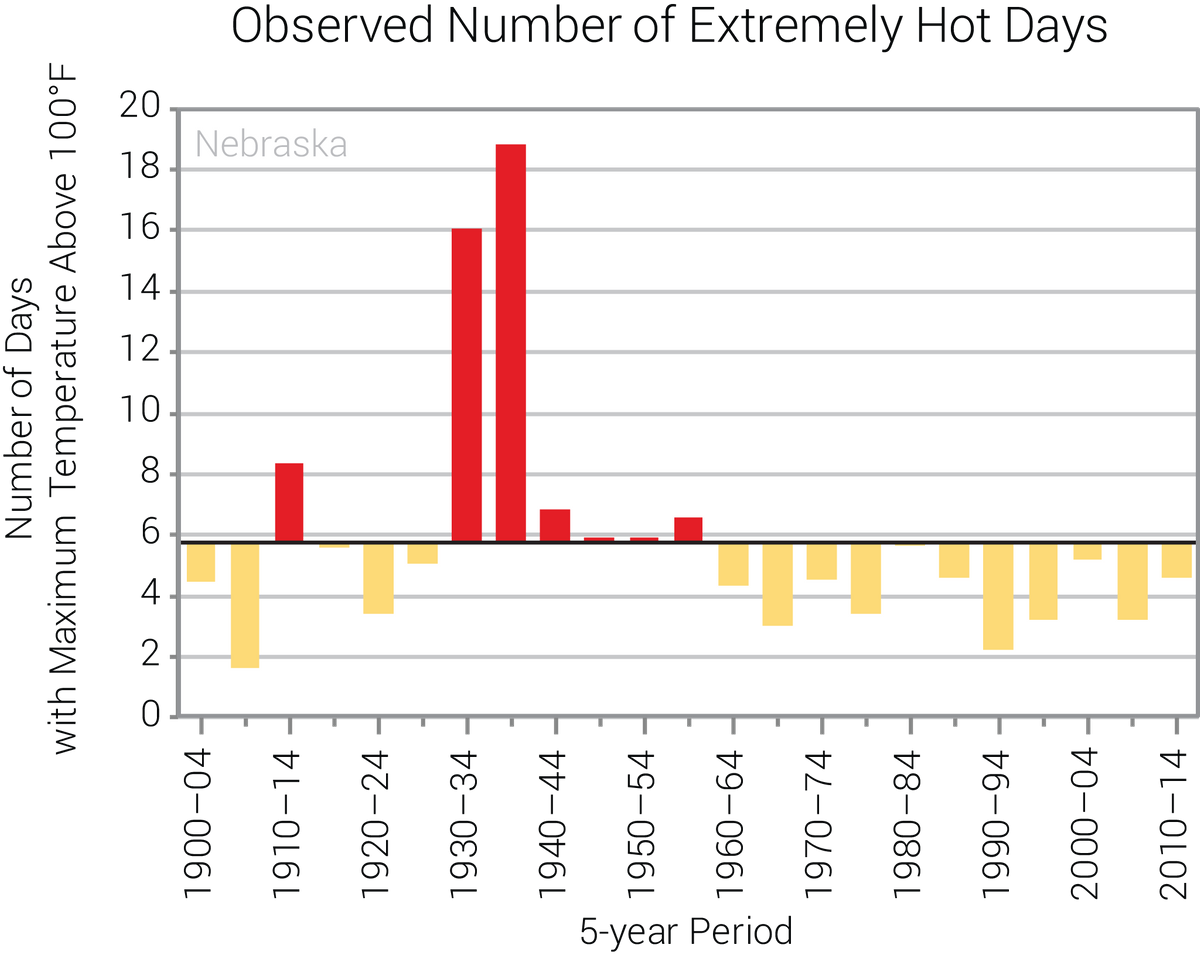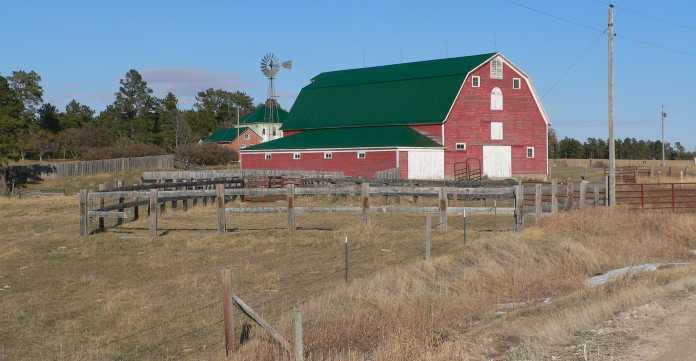A story in the Omaha World-Herald, titled “Drought, wildfires are Nebraska’s top weather stories of 2020,” asserts climate change caused unusual drought in Nebraska last year. In reality, National Oceanic and Atmospheric Administration (NOAA) data show Nebraska is benefiting from a long-term increase in precipitation, even if occasional drought still exists. Global warming may not completely end drought in Nebraska, but drought is becoming less frequent and less severe as the Earth modestly warms.
The World-Herald article states, “At the start of 2020, not an acre of Nebraska was in drought, according to the U.S. Drought Monitor. Now, more than 99% of Nebraska is in drought, with half in severe to extreme drought. The state hasn’t seen a drought this extensive since the flash drought of 2012 lingered into 2013, according to the U.S. Drought Monitor, based at the University of Nebraska-Lincoln.”
“Through November, Nebraska was in the midst of its 15th driest year out of 126,” the World-Herald article added.
As the World-Herald admits, Nebraska had not experienced substantial drought during the previous seven years, and 2020 was not even in the top 10 percent of historic droughts. That is hardly the sign of unusual drought, let alone drought caused by climate change.
Indeed, NOAA precipitation data (see the two NOAA charts, below) show Nebraska is enjoying both a long-term increase in precipitation and a medium-term increase in precipitation. If all trends show more precipitation and less drought, how can one blame the few remaining droughts that occur on climate change?


Also, NOAA data (see the NOAA chart below) show no increase in hot summer temperatures. Indeed, hot summer days were much more prevalent throughout the first half of the 20th century than has been the case in recent years and decades. This also contradicts any assertion of more Nebraska drought.

The World-Herald cites a single source, Nebraska state climatologist Martha Shulksi, for the claim that climate change is causing more weather extremes, including drought. But even Shulksi noted, “weather extremes are normal in Nebraska because the state sits at the crossroads of continental climate patterns.” And, of course, 2020 wasn’t even that extreme – it was a fairly typical dry year.
Had the World-Herald examined Nebraska’s drought history for context, it would have found that research published by the University of Nebraska-Lincoln’s Institute of Agriculture and Natural Resources (IANR) states, “It is important to remember that droughts, including multiple-year droughts, are a normal part of Nebraska’s climate.”
The data graphically displayed in Figure 1 in IANR’s paper, “Multiple-Year Droughts In Nebraska,” show no increasing trend in the frequency or intensity of droughts in Nebraska over the past century, nor does it display an increased tendency for Nebraska to swing from weather extremes, wet to dry, year to year.
Data in the paper do show, by contrast, that since 1220 A.D., Nebraska has experienced 11 droughts of more than 10 years in length, but only one since 1900, and that one, ending in 1931, was 90 years of global warming ago. Indeed, Nebraska’s lengthiest droughts occurred before 1700, in the midst of the Little Ice Age, with six droughts surpassing 18 years in length during a 400-year period of cooler temperatures. Nebraska’s lengthiest droughts spanned 38 years (1275 to 1313) and 26 years (1539 to 1564), while the Earth was cooling in the Little Ice Age. Nebraska’s last drought of greater than 10 years in length ended in 1895, which was near the end of the Little Ice Age.
Data from NOAA and the U.N. Intergovernmental Panel on Climate Change (IPCC), discussed in Climate at a Glance: Drought, also demonstrate drought has not become more frequent or severe in recent decades in either the United States or across the Northern Hemisphere as a whole.
Indeed, the IPCC reports with “high confidence” that precipitation has increased over mid-latitude land areas of the Northern Hemisphere (including the United States) during the past 70 years, while IPCC has “low confidence” about any negative trends globally. Also, NOAA reports that the United States is undergoing its longest period in recorded history without at least 40 percent of the country experiencing “very dry” conditions. In 2017 and 2019, the United States registered its smallest percentage of land area experiencing drought in recorded history.
The Omaha World-Herald may be looking to sell newspapers, but it should act responsibly and not attempt to do so by publishing false and sensationalist claims about extreme drought conditions – assertedly caused by human-caused climate change – that simply do not exist.

















